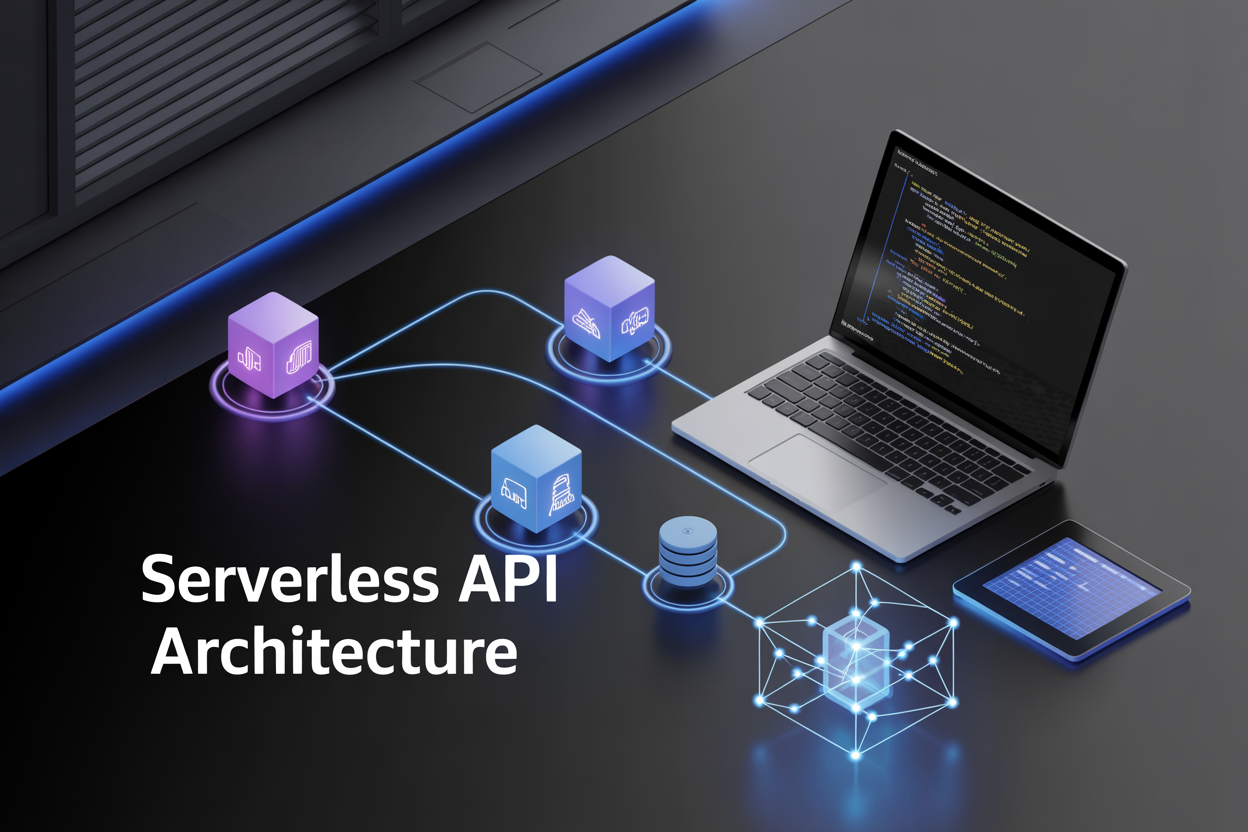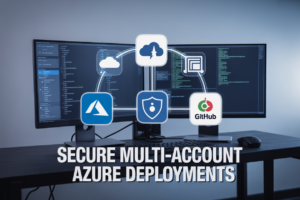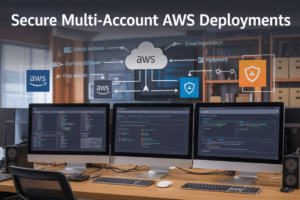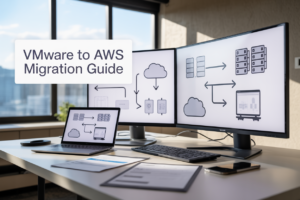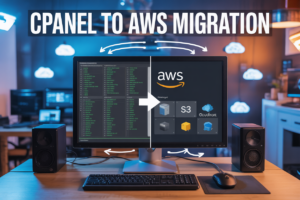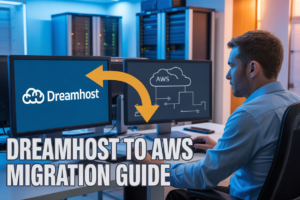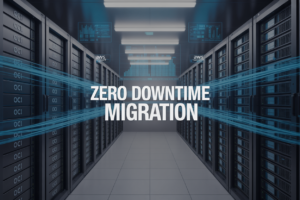AWS serverless architecture promises instant scaling and pay-per-use pricing, but there’s a ghostly problem lurking beneath the surface. Just like the legendary Flying Dutchman ship that appears and disappears from the seas, your Lambda functions can vanish from memory and take precious seconds to materialize again when needed.
This guide is for developers and DevOps engineers who want to understand and solve the cold start problem that’s been haunting serverless applications since day one. You’ll learn why AWS Lambda cold starts happen, how they impact your users, and most importantly, what you can do about them.
We’ll break down the Flying Dutchman effect in serverless computing and why your functions sometimes feel like they’re sailing in limbo. You’ll discover proven cold start mitigation strategies that actually work in production, from simple code optimizations to advanced warming techniques. Finally, we’ll cover monitoring and optimization approaches to keep your serverless performance smooth and predictable.
Stop letting cold starts sink your application’s user experience. Let’s turn your ghostly Lambda functions into reliable, fast-responding workhorses.
Understanding AWS Serverless Architecture Fundamentals
Core serverless principles and benefits for modern applications
AWS serverless architecture eliminates server management burdens by automatically handling infrastructure provisioning, scaling, and maintenance. Applications built on serverless principles respond to events and scale dynamically based on demand, charging only for actual compute time consumed. This event-driven model enables developers to focus on business logic rather than infrastructure concerns, accelerating development cycles while reducing operational overhead and complexity.
Key AWS serverless services overview
Lambda functions serve as the compute backbone, executing code in response to triggers without server provisioning. API Gateway manages REST and WebSocket APIs, routing requests to backend services seamlessly. DynamoDB provides fully managed NoSQL database capabilities, while S3 handles object storage with built-in event notifications. Step Functions orchestrate complex workflows, and EventBridge facilitates event routing across distributed applications, creating comprehensive serverless ecosystems.
Cost optimization advantages over traditional infrastructure
Traditional server-based deployments require constant resource allocation regardless of actual usage, leading to significant waste during low-traffic periods. Serverless computing follows a pay-per-execution model, charging only when functions actively process requests. This granular billing eliminates idle capacity costs and reduces infrastructure expenses by up to 90% for variable workloads. Auto-scaling capabilities prevent over-provisioning while ensuring adequate resources during peak demand periods.
Scalability and performance characteristics
AWS serverless architecture automatically scales from zero to thousands of concurrent executions within seconds, handling traffic spikes without manual intervention. Lambda functions can process up to 1,000 concurrent executions per region by default, with support for higher limits through AWS support requests. Performance characteristics vary based on runtime, memory allocation, and initialization patterns. Cold start latency represents the primary performance consideration, particularly affecting user-facing applications requiring sub-second response times.
The Flying Dutchman Effect in Serverless Computing
Defining the Flying Dutchman phenomenon in cloud computing
The Flying Dutchman effect describes serverless functions that exist in a limbo state between active execution and complete termination. Like the legendary ghost ship doomed to sail forever, these AWS Lambda functions remain partially initialized in memory but aren’t fully active, creating an uncertain performance state that haunts developers and impacts application responsiveness unpredictably.
How serverless functions become “ghost containers” in your architecture
When Lambda functions complete execution, AWS keeps the execution environment alive for a brief period, hoping for subsequent invocations. These dormant containers consume resources while providing no active service, similar to ghost ships drifting in digital waters. The containers hold onto memory, runtime contexts, and database connections, creating a phantom presence in your serverless architecture that can cause unexpected behavior when the next cold start occurs.
Impact on application performance and user experience
This ghostly behavior directly affects serverless performance optimization efforts, as functions oscillate between warm and cold states unpredictably. Users experience inconsistent response times when functions transition from ghost container status back to active execution. The Lambda function initialization process becomes erratic, making serverless latency reduction challenging. Applications suffer from performance volatility that’s difficult to predict or monitor, turning what should be seamless serverless computing into a frustrating experience for both developers and end users.
Cold Start Challenges in AWS Lambda Functions
Technical mechanics behind cold start initialization
AWS Lambda cold starts happen when your function hasn’t been invoked recently and the container needs to be spun up from scratch. The initialization process includes downloading your deployment package, setting up the runtime environment, and executing any initialization code outside your handler function. This process can take anywhere from hundreds of milliseconds to several seconds, depending on your function’s size and complexity.
Performance bottlenecks and latency implications
Cold starts create significant performance bottlenecks, especially for latency-sensitive applications. The initialization overhead can add 500ms to 10 seconds to your function’s response time. Memory allocation plays a crucial role – functions with higher memory configurations typically experience faster cold starts. Runtime choice also matters, with compiled languages like Go and Rust generally starting faster than interpreted ones like Python or Node.js.
Real-world scenarios where cold starts cause problems
E-commerce checkout processes suffer when Lambda functions powering payment processing experience cold starts during peak shopping periods. API gateways backed by Lambda functions can frustrate users with unexpected delays, especially during the first request after idle periods. Real-time chat applications and gaming backends are particularly vulnerable, as users expect instant responses. Mobile app backends often struggle with cold starts when handling push notifications or user authentication requests.
Measuring and monitoring cold start frequency
CloudWatch metrics provide insights into cold start patterns through duration and invocation tracking. Custom metrics can capture initialization time by measuring the difference between function start and handler execution. X-Ray tracing reveals detailed cold start timelines, showing exactly where initialization bottlenecks occur. Third-party monitoring tools like Dashbird or Lumigo offer specialized cold start analytics with visual dashboards and alerting capabilities.
Business impact of delayed function execution
Cold starts directly affect user experience, leading to higher bounce rates and reduced customer satisfaction. Revenue loss occurs when checkout processes timeout due to initialization delays. Search engine rankings can suffer as page load times increase beyond acceptable thresholds. Customer support costs rise as users report “slow” applications, even when the underlying infrastructure is performing normally during warm invocations.
Proven Strategies to Minimize Cold Starts
Function warming techniques and implementation
The simplest approach to combat AWS Lambda cold starts involves implementing function warming through scheduled invocations. CloudWatch Events can trigger your Lambda functions every 5-15 minutes with dummy payloads, keeping execution environments active. This technique works best for functions with predictable traffic patterns. Configure your warming logic to identify these synthetic requests and return immediately without executing business logic. While warming reduces cold start frequency, it increases costs due to regular invocations. Consider implementing intelligent warming that scales with actual usage patterns and automatically adjusts frequency based on traffic analytics.
Provisioned concurrency configuration best practices
Provisioned concurrency eliminates cold starts entirely by pre-initializing execution environments before requests arrive. Start by analyzing your traffic patterns to determine optimal concurrency levels – set too low and you’ll still experience cold starts, too high and costs escalate unnecessarily. Configure auto-scaling policies that adjust provisioned concurrency based on CloudWatch metrics like invocation rate and error counts. Use Application Auto Scaling to automatically manage provisioned concurrency during peak hours. Monitor utilization rates closely; aim for 70-80% utilization to balance performance with cost efficiency. Schedule provisioned concurrency increases before known traffic spikes like promotional events or batch processing windows.
Memory allocation optimization for faster startup times
Increasing Lambda memory allocation directly improves cold start performance since CPU power scales proportionally with memory. Functions with 512MB or higher memory typically show 30-50% faster initialization times compared to the minimum 128MB allocation. Monitor your function’s actual memory usage through CloudWatch to find the sweet spot where cold start improvements justify increased costs. Code optimization plays a crucial role – minimize dependency sizes, lazy-load heavy libraries, and reduce initialization complexity. Consider splitting large functions into smaller, focused microservices with optimized memory configurations. Functions requiring significant CPU during initialization benefit most from higher memory allocations, while I/O-heavy functions see diminishing returns.
Advanced Mitigation Techniques for Production Environments
Connection Pooling and Resource Reuse Patterns
Database connections consume significant initialization time during AWS Lambda cold starts. Implementing connection pooling through libraries like mysql2 or pg-pool keeps connections alive between invocations, dramatically reducing serverless cold start latency. Global variable patterns store reusable resources outside the handler function, persisting connections across warm invocations. Smart connection management prevents timeout issues while optimizing serverless performance optimization across your AWS serverless architecture.
Dependency Management and Package Size Reduction
Package bloat directly impacts Lambda function initialization time and cold start performance. Bundle analyzers like webpack-bundle-analyzer identify unnecessary dependencies consuming deployment package space. Tree-shaking eliminates unused code paths, while layer-based architecture separates heavy dependencies from core business logic. Minification tools reduce JavaScript bundle sizes by 40-60%, accelerating Lambda cold start mitigation strategies and improving overall serverless latency reduction in production workloads.
Runtime Selection Impact on Cold Start Performance
Runtime choice significantly affects AWS Lambda cold start duration across different programming languages. Node.js and Python runtimes typically initialize faster than Java or .NET, showing 200-500ms differences in cold start times. ARM64-based Graviton2 processors deliver 20% better price-performance while maintaining similar initialization speeds. JIT compilation overhead in Java creates longer cold start delays, making runtime selection a critical factor in serverless computing challenges and Lambda performance tuning decisions.
Container Image Optimization for Lambda Functions
Multi-stage Docker builds reduce container image sizes for Lambda functions, minimizing cold start overhead in serverless deployments. Base image selection impacts initialization performance – Alpine Linux images start 30-40% faster than standard distributions. Layer caching strategies position frequently-changing application code in upper layers while keeping dependencies in lower, cached layers. Distroless images eliminate unnecessary OS components, creating lean containers that enhance AWS Lambda performance tuning and reduce the Flying Dutchman effect serverless phenomenon.
Monitoring and Optimizing Serverless Performance
CloudWatch metrics for tracking cold start patterns
CloudWatch provides essential metrics to identify and track AWS Lambda cold start patterns, helping you understand when functions experience initialization delays. The Duration metric shows total execution time, while you can create custom metrics to distinguish cold starts from warm invocations by tracking initialization code separately from business logic execution.
X-Ray tracing for identifying performance bottlenecks
AWS X-Ray traces requests through your serverless architecture, revealing exactly where cold starts occur and how they impact overall application performance. X-Ray segments show Lambda function initialization time, downstream service calls, and database connections, giving you a complete picture of your serverless performance optimization opportunities and bottlenecks affecting user experience.
Cost-benefit analysis of optimization strategies
Balancing cold start mitigation costs against performance gains requires careful analysis of your specific workload patterns and business requirements. Provisioned Concurrency eliminates cold starts but adds baseline costs, while techniques like connection pooling and smaller deployment packages reduce initialization time without ongoing expenses. Calculate the financial impact of user experience improvements versus optimization costs to determine the most effective serverless performance tuning approach for your AWS Lambda functions.
AWS serverless architecture offers incredible scalability and cost benefits, but the Flying Dutchman effect and cold starts can create unexpected performance hurdles. Like a ghost ship that appears and disappears unpredictably, your Lambda functions might experience delays when they haven’t been invoked recently. The good news is that cold starts don’t have to haunt your applications forever.
Smart provisioning, proper memory allocation, and connection pooling can dramatically reduce these delays. Keep your functions warm with scheduled invocations, optimize your deployment packages, and choose the right runtime for your needs. Don’t forget to monitor your performance metrics closely – what gets measured gets managed. Take action today by implementing these strategies in your serverless applications and watch those cold start times drop significantly.










